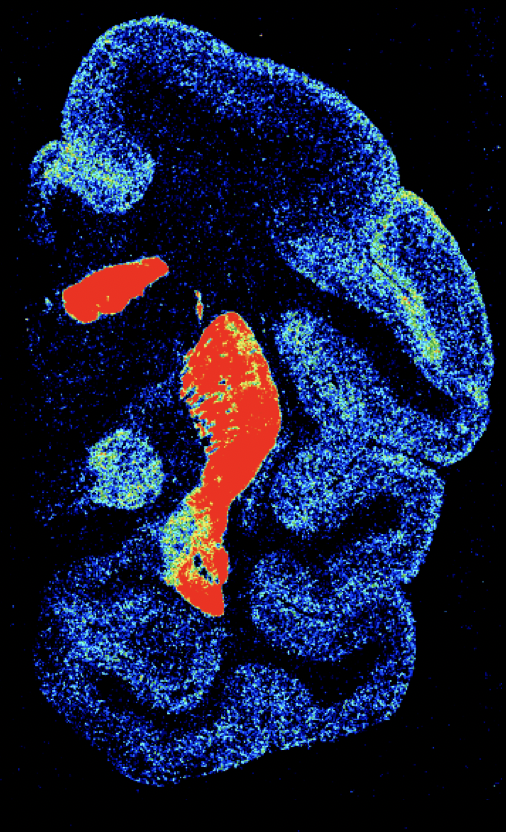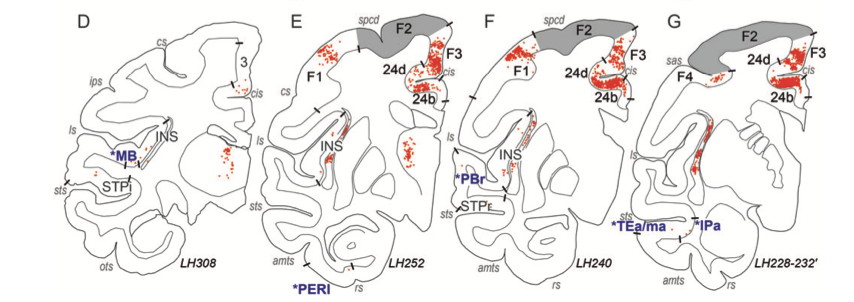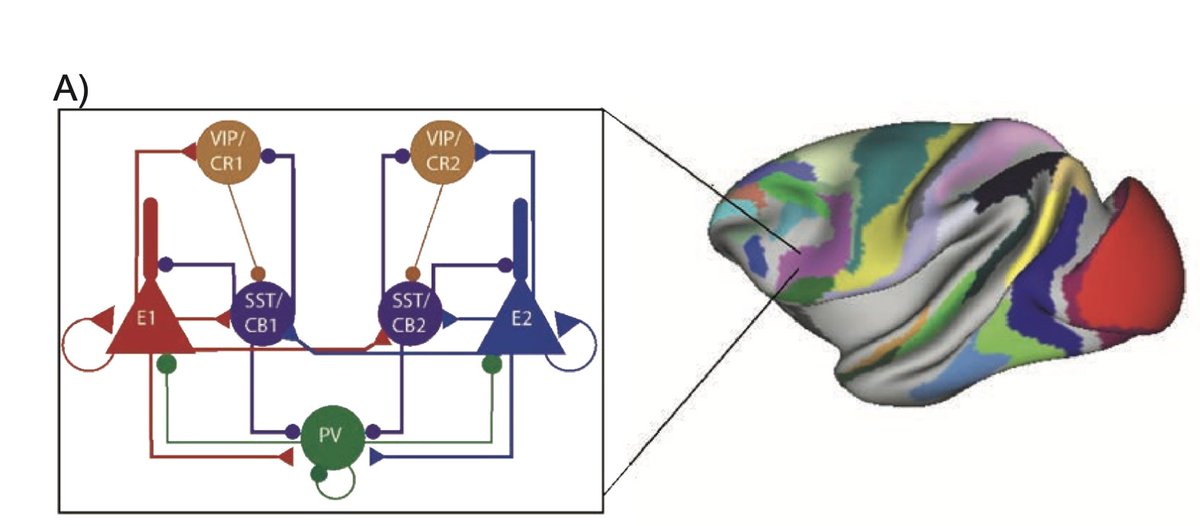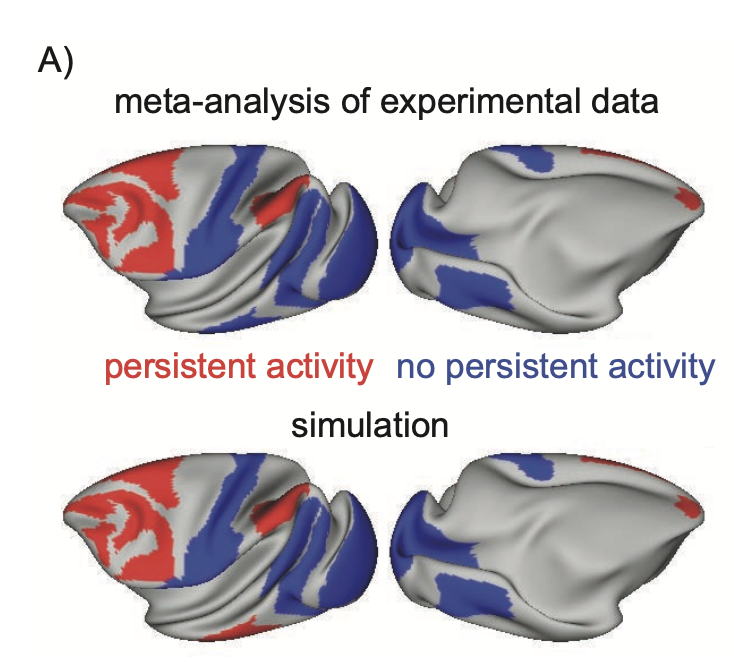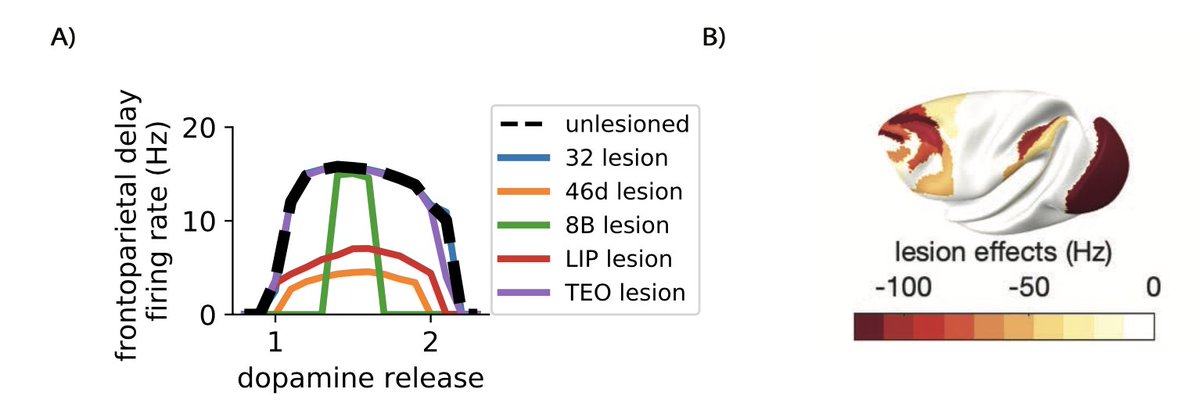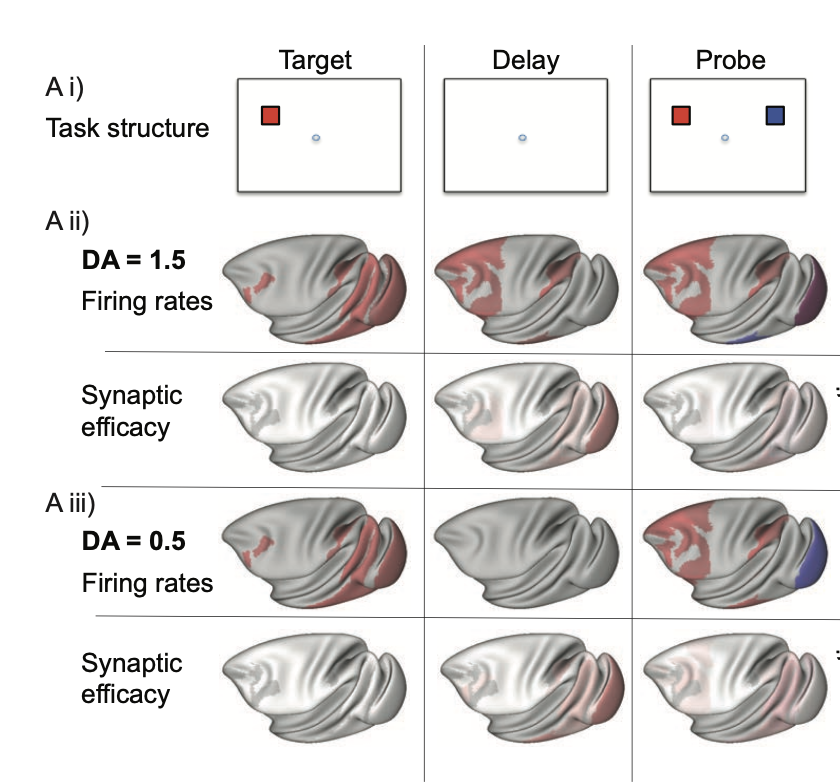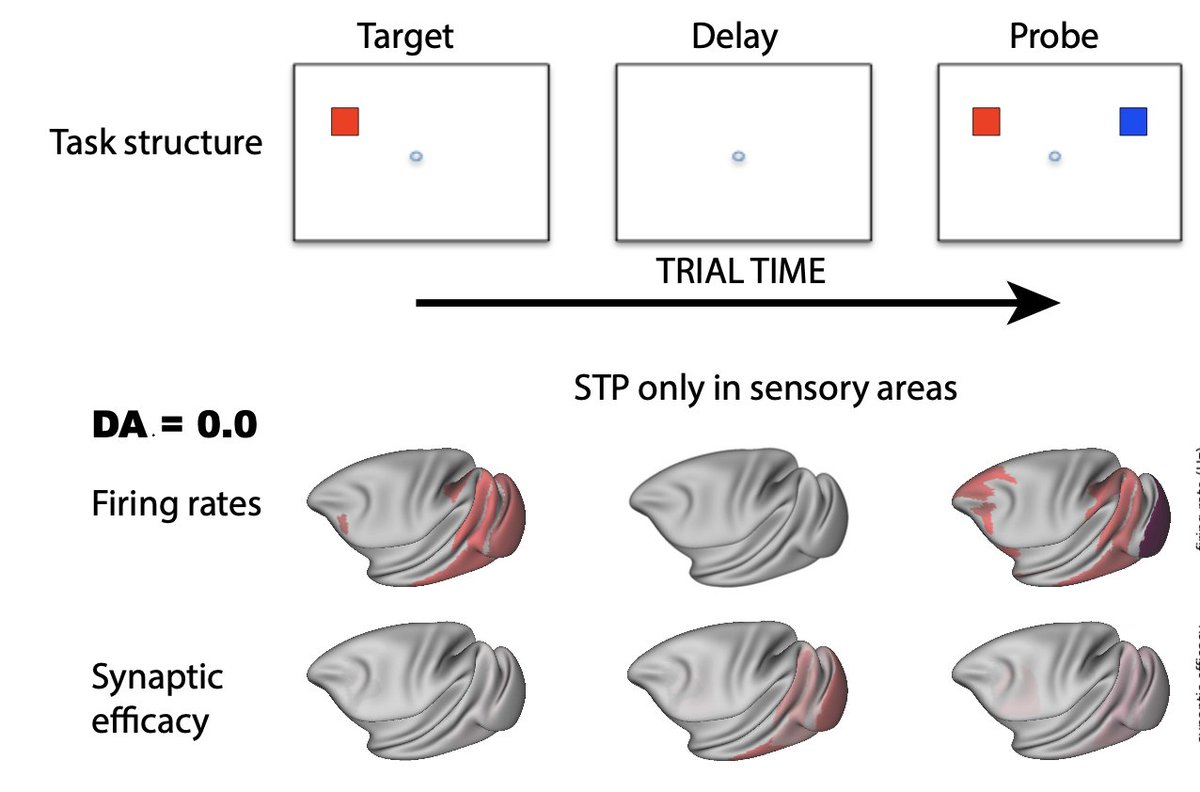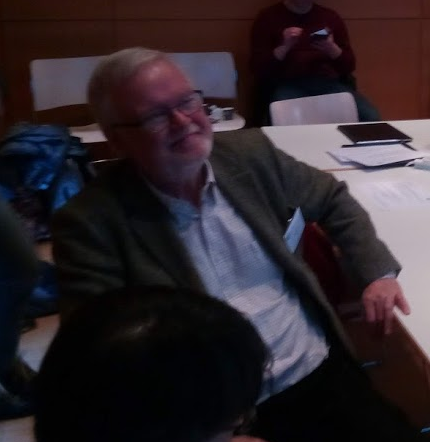1) Three years ago I saw a fascinating talk by Nicola Palomero-Gallagher about the patterns of receptors across the brain. I spoke to her and the great Prof. Karl Zilles afterwards. That chat eventually led us to our new preprint with XJ Wang & team: https://www.biorxiv.org/content/10.1101/2020.09.07.286500v1">https://www.biorxiv.org/content/1...
2) Why do certain things hold our thoughts even after they disappear from view, while others fade instantly? We thought it might depend on whether dopamine receptors in the cortex were activated. But first we needed to know where in cortex we could find them.
3) The amazing Palomero @NiuMeiqi Lucija Rapan & Zilles painstakingly measured dopamine D1 receptors across 109 (!) areas of cortex. It turns out that sensory and motor areas have relatively few D1 receptors, but frontal and parietal areas involved in higher cognition have lots!
4) We built a computational model to investigate how dopamine affects working memory across the cortex. We first needed to know how regions across the cortex were connected. Luckily, Henry Kennedy and co have been tracing the cellular connectivity of cortex for years
5) The cortex has different types of neurons, each with their own favourite pattern of connectivity. In each cortical area in the model, we simulated excitatory and multiple types of inhibitory neurons.
6) Interactions between neuron types in the model depend on the pattern of connectivity between areas, and are modulated by dopamine. Areas with more dopamine receptors feel the dopamine kick more strongly.
7) When we present a stimulus to primary visual cortex in the model, activity quickly spreads through the visual system. If dopamine release is strong enough, activity ignites in areas across frontal and parietal cortex, and the model can hold the stimulus in memory.
8) In 2017 @JulioMTNeuro and friends heroically analysed working memory activity from over 90 studies, each recording from one or two areas at a time. When they put together the activity from all of these studies, the pattern is almost identical to the activity in our model.
9) What happens when the brain is injured? Lesions to areas with more dopamine receptors disrupt working memory activity most. Some lesions could be & #39;treated& #39; better than others with simulated & #39;drugs& #39;, but the best treatment depended the baseline dopamine levels
10) @StokesNeuro has shown that some things can be remembered without persistent activity. This is called ‘activity-silent’ working memory. This has led to a heavyweight debate in the field between the likes of @c_constan @johndmurray and @MillerLabMIT
11) The most popular model of ‘silent’ working memory involves temporary changes to the synapses between neurons in prefrontal cortex. We found that memories could be stored in this silent state, and that dopamine could switch between silent and active ways of storing the memory
12) But rather than local changes in the prefrontal cortex, it seems that the most important synaptic changes are on long-range inputs from sensory areas to frontal and parietal cortex.
13) Why have two ways to store the same info? It turns out that persistent activity is better for holding information when faced with distracting stimuli. The brain can release dopamine to keep important information safe from distraction, and use synaptic mechanisms otherwise
14) How does dopamine stop us getting distracted? Remember those inhibitory neurons? Some target the soma, and others the dendrites of excitatory cells. Dopamine shifts inhibition to the dendrites. This can stop distracting info from sensory areas disrupting activity in PFC
15) How does the brain know when to release dopamine? Using simple reinforcement learning in the VTA (which contains dopamine cells) the model can learn to release dopamine and engage persistent activity throughout the cortex when stimuli that predict reward are shown.
16) So there is a gradient of dopamine D1 receptors from sensory to frontal and parietal cortex. Our model suggests that the brain releases dopamine to these receptors to keep important information from distraction, and can use synaptic mechanisms to store less salient info

 Read on Twitter
Read on Twitter